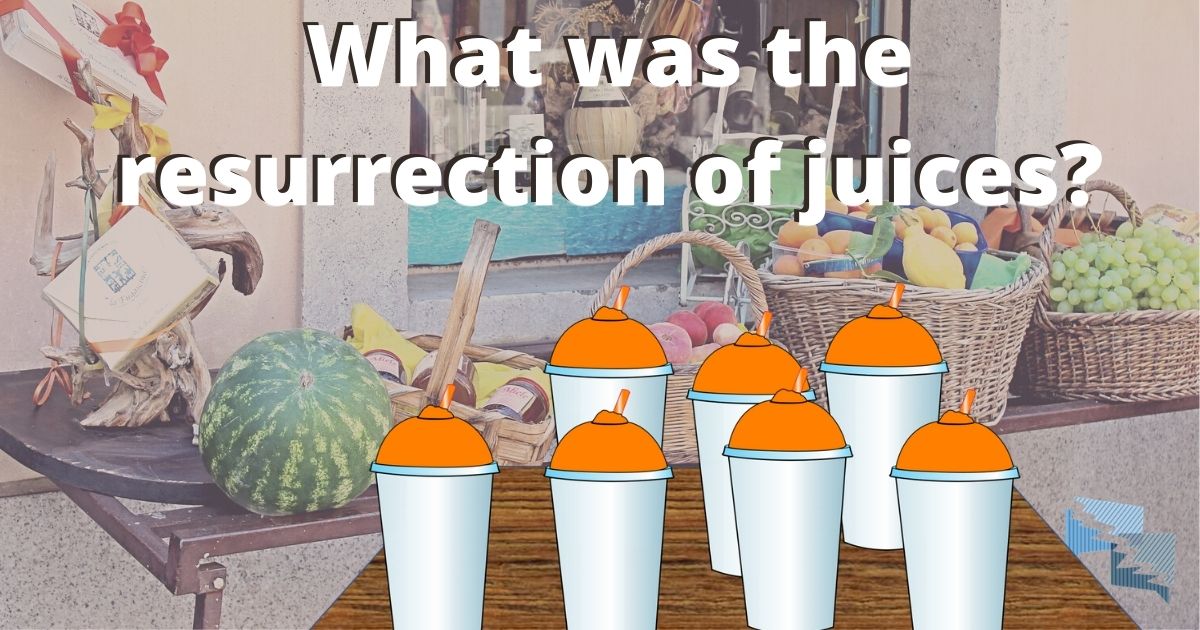
What was the resurrection of juices?
The resurrection of juices is a controversial technique used to restore stale or otherwise unfit fruit liquids to a state where they can be safely consumed. In ancient cultures, there was no way to store juices for long periods without fermentation. In some cases, the juice would simply spoil and be wasted. By normal means, the resurrection of juices from fermentation or rotting is impossible. Modern processes are not literal "resurrection of juices," they are merely "remixing of juices" to dilute toxic substances.
However, God is and always has been a God of miracles. The rarely-read Gospel of Julius claims a teenaged Jesus went outside during a particularly cold Nazarene winter. He overheard His mother and adoptive father bickering over oranges which had accidentally been allowed to freeze, ruining them. Taking up the frozen fruit, Jesus rubbed them together with wild honey and ice, transforming them into a delicious drink.
At first, this was not seen as a miracle. It was simply assumed Jesus had potential to make a fortune selling smoothies to Israeli shoppers in Jerusalem. According to the Gospel of Julius, Jesus was disappointed that this resurrection of juices was not recognized. The last chapter records Jesus telling Joseph and Mary that, as punishment, He would make humanity wait another two thousand years before discovering something described using the Hebrew word Sinn'a'bonn'.
Jesus isn't cruel, however. He allowed Mary's sister Anne to open her pretzel shop right after His resurrection.
However, God is and always has been a God of miracles. The rarely-read Gospel of Julius claims a teenaged Jesus went outside during a particularly cold Nazarene winter. He overheard His mother and adoptive father bickering over oranges which had accidentally been allowed to freeze, ruining them. Taking up the frozen fruit, Jesus rubbed them together with wild honey and ice, transforming them into a delicious drink.
At first, this was not seen as a miracle. It was simply assumed Jesus had potential to make a fortune selling smoothies to Israeli shoppers in Jerusalem. According to the Gospel of Julius, Jesus was disappointed that this resurrection of juices was not recognized. The last chapter records Jesus telling Joseph and Mary that, as punishment, He would make humanity wait another two thousand years before discovering something described using the Hebrew word Sinn'a'bonn'.
Jesus isn't cruel, however. He allowed Mary's sister Anne to open her pretzel shop right after His resurrection.
This is what WOULD happen if GotQuestions.org genuinely, honestly answered all the mis-typed, autocorrected, or otherwise altered "spiritual" questions that come their way every day.
HOME | ABOUT | CATEGORIES | CONTACT | THE REAL SITE
© 2024 Got Questions Ministries. All rights reserved.

